Moscow State Tretyakov Gallery
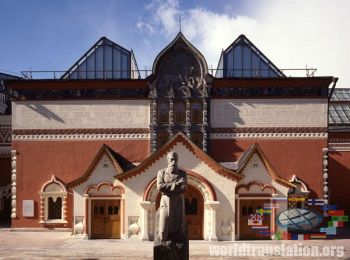
Moscow State Tretyakov Gallery has gathered a huge collection of fine art of famous Russian painters, is a worldwide known national and cultural center. Gallery (which is now a museum) is named after its founder - merchant Pavel Tretyakov, who in 1892 has presented Moscow - his picture gallery (about 2,000 paintings) , a collection of his brother Sergei and and building in the Lavrushin Lane, which was rebuilt as a museum.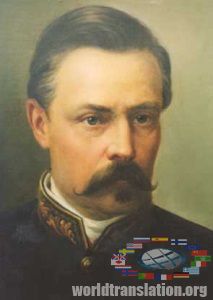 Pavel Tretyakov wrote: "From the early years, I wanted to amass goods namely in order, that everything acquired by me in the society returned to the same society in the form of some necessary institutions". Tretyakov thought of creating a public museum of Russian art, which would map a "complete picture of Russian painting". Tretyakov doesn't only collect paintings, which were significant for the history of Russian art, but also materially and morally supported native painters. Repin said: "All the Russian school of painting owes Tretyakov".
Pavel Tretyakov wrote: "From the early years, I wanted to amass goods namely in order, that everything acquired by me in the society returned to the same society in the form of some necessary institutions". Tretyakov thought of creating a public museum of Russian art, which would map a "complete picture of Russian painting". Tretyakov doesn't only collect paintings, which were significant for the history of Russian art, but also materially and morally supported native painters. Repin said: "All the Russian school of painting owes Tretyakov".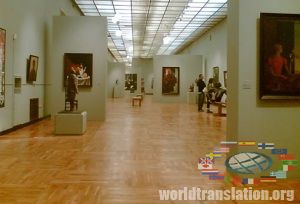 Modern art was then presented primarily by the Wanderers (Peredvizhniki), but in the sixties, when there was no Association of the Wanderers, Tretyakov acquired paintings of the official academic school, and from the end of the eighties - paintings of Serov, Korovin, Nesterov, etc. At that time Pavel Tretyakov began to collect the graphics and in the nineties also the icons.
Modern art was then presented primarily by the Wanderers (Peredvizhniki), but in the sixties, when there was no Association of the Wanderers, Tretyakov acquired paintings of the official academic school, and from the end of the eighties - paintings of Serov, Korovin, Nesterov, etc. At that time Pavel Tretyakov began to collect the graphics and in the nineties also the icons.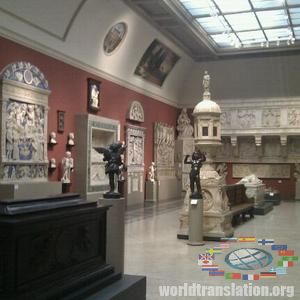 In 1872, Tretyakov built the first extension to his home - especially for the museum, and in 1881, the museum has been open for visitors. There was free entrance, the paintings can be copied. Paintings of different ages were hanging in the same room, sometimes they were hung in 5-6 rows: Tretyakov did not hold the paintings in the store. There have been no major and minor paintings, each was considered unique. Tretyakov perfectly oriented in the gallery - and knew what and where was located. He did the first restorations, and also covered the paintings with lacquer.
In 1872, Tretyakov built the first extension to his home - especially for the museum, and in 1881, the museum has been open for visitors. There was free entrance, the paintings can be copied. Paintings of different ages were hanging in the same room, sometimes they were hung in 5-6 rows: Tretyakov did not hold the paintings in the store. There have been no major and minor paintings, each was considered unique. Tretyakov perfectly oriented in the gallery - and knew what and where was located. He did the first restorations, and also covered the paintings with lacquer.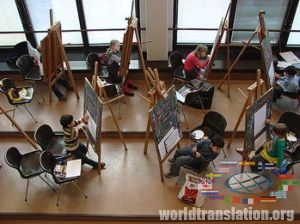 Pavel Tretyakov has died in 1898. In his testament he asked to leave the exposure, as it was, without any changes. After the death of the founder the Council of the Tretyakov Gallery, which was elected by City Council began to manage the museum. The Council of the Tretyakov Gallery has decided to buy pictures of old and new art, but they put new works separately from the main collection. After the reconstruction by project of Viktor Vasnetsov, the museum got a new facade. The main facade with the image of George the Victorious is a modern symbol of the Tretyakov Gallery.
Pavel Tretyakov has died in 1898. In his testament he asked to leave the exposure, as it was, without any changes. After the death of the founder the Council of the Tretyakov Gallery, which was elected by City Council began to manage the museum. The Council of the Tretyakov Gallery has decided to buy pictures of old and new art, but they put new works separately from the main collection. After the reconstruction by project of Viktor Vasnetsov, the museum got a new facade. The main facade with the image of George the Victorious is a modern symbol of the Tretyakov Gallery.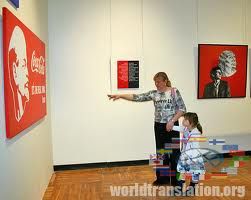 In 1913, the painter Igor Grabar headed the Council of gallery. He wanted to make a modern museum from the gallery. He united the old and the new collections, placing the paintings of each painter or on one wall, or in the same room, he placed the paintings in chronological order. He also compiled the first catalog of the gallery, which was published in 1917, also a permanent restoration workshop was created.
In 1913, the painter Igor Grabar headed the Council of gallery. He wanted to make a modern museum from the gallery. He united the old and the new collections, placing the paintings of each painter or on one wall, or in the same room, he placed the paintings in chronological order. He also compiled the first catalog of the gallery, which was published in 1917, also a permanent restoration workshop was created.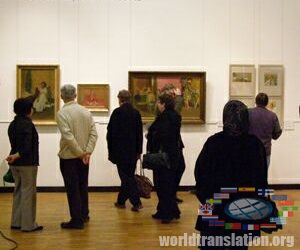 In 1917, the museum was nationalized and named the State Tretyakov Gallery. The same Igor Grabar became its first director. At that time, the state has assigned a lot of palaces, estates, mansions and private collections - a huge number of paintings were given to various museums. In 1918 was created the National Museum Fund - which has become the main source of replenishment of the Tretyakov Gallery.
In 1917, the museum was nationalized and named the State Tretyakov Gallery. The same Igor Grabar became its first director. At that time, the state has assigned a lot of palaces, estates, mansions and private collections - a huge number of paintings were given to various museums. In 1918 was created the National Museum Fund - which has become the main source of replenishment of the Tretyakov Gallery. 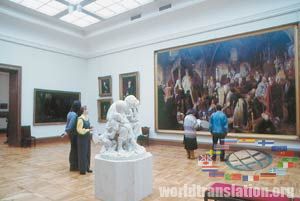 During the Revolution and the Civil War owners of art works considered Tretyakov Gallery the safest place to store their pictures, and as a result they placed their collections there for some time. But after a while their collections were declared a state property. So private collections of Hirschman, Borisova-Musatova, Ryabushinsky etc, replenished the gallery.
During the Revolution and the Civil War owners of art works considered Tretyakov Gallery the safest place to store their pictures, and as a result they placed their collections there for some time. But after a while their collections were declared a state property. So private collections of Hirschman, Borisova-Musatova, Ryabushinsky etc, replenished the gallery.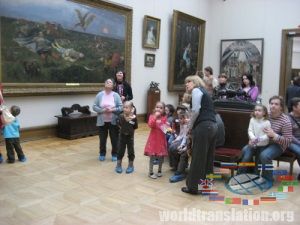 In the second half of the twenties collections from several other museums (Museum of iconography and painting named after Ostroukhov, Cvetkovski gallery, Rumyantsev Museum) were transfered to the Tretyakov Gallery. In 1925, the collection of Western European art, collected by Sergei Tretyakov was transferred to Museum of Fine Arts named after A. S. Pushkin (located in Moscow on Volkhonka). From the Assumption Cathedral of the Moscow Kremlin were transferred following icons: "Trinity" by Andrei Rublev and Vladimir Icon of the Mother of God. Have also continued to acquire works of Soviet art.
In the second half of the twenties collections from several other museums (Museum of iconography and painting named after Ostroukhov, Cvetkovski gallery, Rumyantsev Museum) were transfered to the Tretyakov Gallery. In 1925, the collection of Western European art, collected by Sergei Tretyakov was transferred to Museum of Fine Arts named after A. S. Pushkin (located in Moscow on Volkhonka). From the Assumption Cathedral of the Moscow Kremlin were transferred following icons: "Trinity" by Andrei Rublev and Vladimir Icon of the Mother of God. Have also continued to acquire works of Soviet art.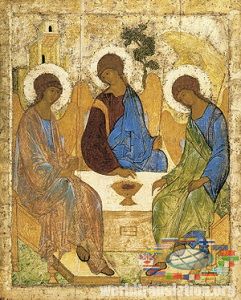 Due to the increasing of the collection appeared a need to expand the gallery. So in 1929, a former home of Sokolikov, which was located near the gallery was joined to the State Tretyakov Gallery, and in 1936 a new corps was built in the right p art of museum complex. In 1986 a building of the National Art Gallery which is located on the Crimean Shaft was transferred to the Tretyakov Gallery.
Due to the increasing of the collection appeared a need to expand the gallery. So in 1929, a former home of Sokolikov, which was located near the gallery was joined to the State Tretyakov Gallery, and in 1936 a new corps was built in the right p art of museum complex. In 1986 a building of the National Art Gallery which is located on the Crimean Shaft was transferred to the Tretyakov Gallery. 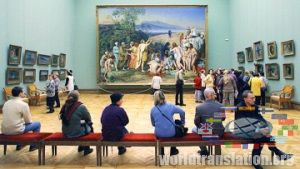 Last reconstruction was carried out from 1982 to 1996: was built the storeroom of the museum, were Corps of Engineers, restoration workshops, lecture and exhibition halls, children's studio were placed. Also was proposed to continue the construction of the museum complex until the Bypass Channel and also along the Small Tolmachevskiy Alley. In this case, the "qu arter of Art" will be completed.
Last reconstruction was carried out from 1982 to 1996: was built the storeroom of the museum, were Corps of Engineers, restoration workshops, lecture and exhibition halls, children's studio were placed. Also was proposed to continue the construction of the museum complex until the Bypass Channel and also along the Small Tolmachevskiy Alley. In this case, the "qu arter of Art" will be completed.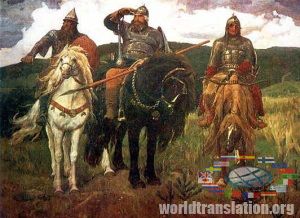 Now Tretyakov Gallery has about 100 thousand pictures in its collection. It has the following sections: ancient art, Russian art of the 18th century, of the first half of the 19th century, of the second half of the 19th century, and of the 19-20 centuries, Russian graphic of 18 - early 20th centuries, the largest section of the Soviet painting, graphics and sculpture, Russian sculpture.
Now Tretyakov Gallery has about 100 thousand pictures in its collection. It has the following sections: ancient art, Russian art of the 18th century, of the first half of the 19th century, of the second half of the 19th century, and of the 19-20 centuries, Russian graphic of 18 - early 20th centuries, the largest section of the Soviet painting, graphics and sculpture, Russian sculpture.
Video: "Tretyakov Gallery within 10 minutes"